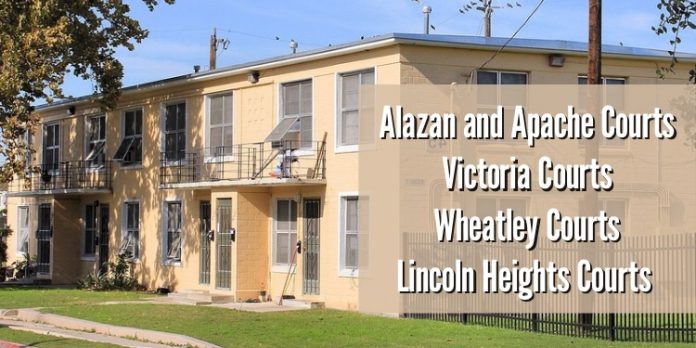San Antonio: Racist as any Deep South City
When greater numbers of Black residents moved to San Antonio with the arrival of the railroad in the late 19th century, they initially settled evenly across the city. Many Black residents lived in their white employers’ houses, (often in small sheds in the back of the house), or on their property, meaning that the community was racially mixed but highly segregated. As whites in San Antonio, who hated being around Black and Brown people, abandoned the downtown central areas of San Antonio they used streetcars and automobiles to get away from the downtown business district, Black residents created their own communities in their wake. Black neighborhoods began to form in what would become Newcombville, which later became the Black West Side and Kenwood, Cementville (where the Quarry Mall is currently located), and the Baptist Settlement, which is now the Victoria Commons area.
No Blacks or Browns Allowed in These Neighborhoods
Between 1900 and 1925, White residents built new suburbs and developments on the elevated outskirts of the city while preventing Black residents from purchasing or renting homes in the neighborhood. New developments in Manche Park, Queensboro Place, Olmos Park, Terrell Hills, Brackenridge Park, Terrell Hills, and Alamo Heights became “White only” neighborhoods that included restrictive covenants written into the deeds of the properties that prohibited Black residents and often ethnic Mexicans from buying or renting in San Antonio’s White areas. In fact, former Mayor Walter McAllister banned Blacks And Browns in deeds on his property and said this, “No lot, tract, or re-subdivision thereof, shall ever be sold, leased, demised or conveyed by deed, lease, gift or otherwise to Mexicans, Negroes, or persons of either Latin American or African descent.”
Redlining History in San Antonio
In addition to restrictive covenants, racist redlining practices helped to continue housing segregation across San Antonio and the United States. During the Great Depression, the Home Owners Loan Coalition (HOLC) was created in 1933 to provide low-interest loans and mortgages to help prevent a flood of foreclosures. The HOLC conducted surveys of major US cities, creating maps of the racial breakdown of neighborhoods and rating areas based on their levels of “risk” or “desirability.” Within San Antonio, as well as most US cities, the areas of the maps labeled Grade D (“Hazardous”) or Grade C (“Definite Declining”) directly overlapped with areas marked as “Negro” or “Mexican.” These maps were used by the Federal Housing Administration (FHA) to determine whether to provide low-interest home loans to both private individuals and developers, meaning that the areas considered “high-risk”, Grades C and D, were systematically denied. This practice of redlining confined Blacks to the East and West sides of the city to prevent the White part of town from being considered “undesirable.”
San Antonio Housing Projects Are Designed To Segregate
San Antonio was a city with major racism. It was as racist as any city in the Deep South. Bexar County had slave plantations and a major one existed right off of Broadway Street. The streets in that area are named after white supremacists and were named Brahan Street and Cunningham Street. At the end of the Great Depression, the federal government sought to address the issue of widespread, substandard housing by clearing slums and building new publicly subsidized slum-type housing called “Courts.” In 1937, the Wagner-Steagall Act provided funds for local housing authorities, like the ones in San Antonio. This act brought five housing projects to San Antonio, each of which was designed to segregate Black and Brown people within the city: Alazan (1940) and Apache (1942) Courts for Mexican Americans, Victoria Courts (1940) for whites, and Wheatley (1941) and Lincoln Heights (1940) Courts for Blacks.








